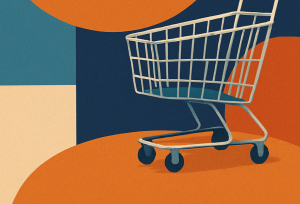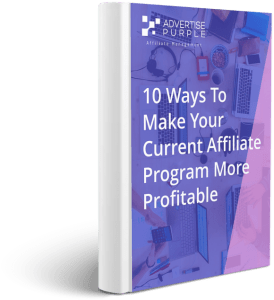
Share
By Alex Cramer
Your cursor hovers over the “Complete Purchase” button. You’re one second away from clicking it when the phone rings, your kid cries, your browser needs an update or for any number of reasons you don’t take that final step that will send a product to your doorstep.
To be this close to making a sale and then watching it evaporate like a raindrop on hot pavement is the ultimate “head-meet-table” moment for any business.
But as bad as it can feel to watch a sure thing turn into a no-sale, know that you are not alone. Like, very not alone.
According to Statista, the cart abandonment rate for retail sites in March of 2021 was over 70%. That means there are literally billions of dollars worth of abandoned carts strewn all over the internet, left by consumers who worked their way down the entire sales funnel, reading reviews, picking up coupons and comparing prices and then, before that one, final moment of truth, just stopped.
Crystal J, our Senior Director of Account Management, says that there are a number of reasons why so many carts are abandoned before checkout.
“Once at the check-out page, consumers narrow down their options and need more convincing to go through with the purchase. Sometimes consumers wait until a promotion is available, or they want assurance that they are getting the best deal possible at the time. Online shoppers are also likely to check out a brand’s competitors to see what they are offering and if they would prefer to purchase from those brands instead.”
The good news is that lowering that rate by even a small percentage can translate into a huge improvement in sales for your business. Here’s how you can do it.
Optimize Your Check Out Flow
Amazon sells more goods in a day than many retailers will in a year. There are obviously a lot of reasons for their success, but one of the important ones is the ease of their checkout process.
One button. Buy now. Click it and you’re done. Purchase confirmed.
Obviously, it might not be as easy for your brand to implement that kind of one-click buying, but it’s still worth making sure that you’ve made the check-out process as seamless, fast and transparent as you possibly can.
That means you shouldn’t try to force your buyers to create an account without giving them an easy way to check out as a guest. Consumers are very protective of both their data and their time and a study by BI Intelligence shows that 37.4% of carts are abandoned at the check-out login.
Also, be very transparent with your pricing and shipping costs. The same BI study shows that 35% of carts are abandoned once shipping costs are tacked on. You want your buyer to be aware of the cost of shipping before they put items in their cart, and not bust their budget with an additional $20 charge right before they hit the buy button.
Crystal believes that employing a few different optimizations on your site can also lower your abandonment rate. “For on-site solutions, exit-intent pop-ups that are prompted when a customer attempts to abandon cart are great ways to re-engage the consumer. Typically call-to-action verbiage including an offer or incentive has a higher likelihood of success.”
Return Policy
There are four words that every retail e-commerce buyer dreads more than any other: Final Sale. No Returns.
Let’s be real. Sometimes that large fits more like a medium, the dress color doesn’t pop the same way it did on the website, or the new toy doesn’t survive first contact with your toddler. It happens, and when it does, all you want is your money back without any hassle.
That’s why a key way to get your buyer over that final hump is to make sure they know that you have a generous return policy and they won’t be stuck with merchandise that doesn’t work for them.
Make your return policy prominent and clear on your website and the more generous the terms are, the better. When customers know that returns are free, return windows are long and the return process is simple, they won’t be scared that they’ll be stuck with a product that they don’t want and they’ll be more likely to smash that buy button.
Hit ’em Up
Sometimes, even with an optimal check-out flow, you’re still going to lose customers who filled up their cart and then said “thanks, but no thanks,” and clicked back to TikTok dance videos.
There are a number of good strategies to draw a customer back after they’ve left your site, but email is probably the most effective. Emails sent within three hours of your customer abandoning their cart have a 40% open rate and a 20% click-through rate.
And if you want to give your customer an extra little push to come back, consider adding a coupon code or an incentive such as free shipping. Also, if items in their cart later go on sale, let them know that the same product they were interested in is now cheaper.
Crystal adds that “Email-retargeting and SMS campaigns are also fantastic tactics to continue to target a customer. Depending on the partner, you can customize the retargeting to fit your needs and even run A/B split tests to find the best method for your brand.”
Look, we get it, it’s frustrating to watch a customer fill up a cart full of your merchandise and then peace out. But the key is to not look at that moment as a failure, and instead see it as just one more part of the buying journey and to know that you have tools that will let you convert a soft-no into a hard-yes.



